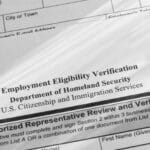Statistics indicate that fraud has accelerated for community banks recently, and the uncertainty surrounding the impacts of the pandemic and election results seem to be the cause. People are feeling anxious and many are desperate to make ends meet.
Banks should be on high alert for both internal fraud with employees and external fraud concerning customers.
It would be wise for all financial institutions to retrain employees on fraud indications, as well as educate their customers on fraud protection.
The Fraud Triangle: Spotting Bank Fraud Starts with Understanding Why and When it Happens
- Pressure – the need for something (financial or emotional) is there due to an event (i.e., loss of income, health, or home)
- Opportunity – having the ability to commit the act without being caught due to a lack of oversight (this is really the only portion of the triangle the bank can influence, so keep a good handle on controls)
- Rationalization – personal justification for why it is okay to commit the fraud
Double-check All Bank Fraud Deterrents:
- Monitor accounts (customers and internally)
- Train employees to “look” at the transactions they are doing and not just do them on auto pilot
- Check for unexpected charges
- Pay attention to cashier checks – using one cashier check to transfer to another or cashing of checks
- Understand the scams that might be happening in your area
- Verify wire transfer activity
- Trust your gut – if the situation doesn’t seem right, make note of it and follow-up
- Perform surprise audits – (i.e., cash, GL accounts, wires, ACH, fixed assets)
- Use dual control in your internal procedures
- Make note of any exceptions to policy and procedures and follow-up
- Be aware of potential alterations on electronic documents
- Implement an anonymous fraud hotline
- Check up on your employees – have a monthly review meeting to see how things are going
- Talk to your peer banks to see what kind of fraud they have seen and how they are handling it
While financial institutions have occupied the number one industry spot for fraud for several years, the frontline awareness has not been as significant is it is right now. The best way to prevent your bank from being a part of this statistic is to limit the opportunities for fraud at your bank, keep your employees educated, and remain vigilant.








